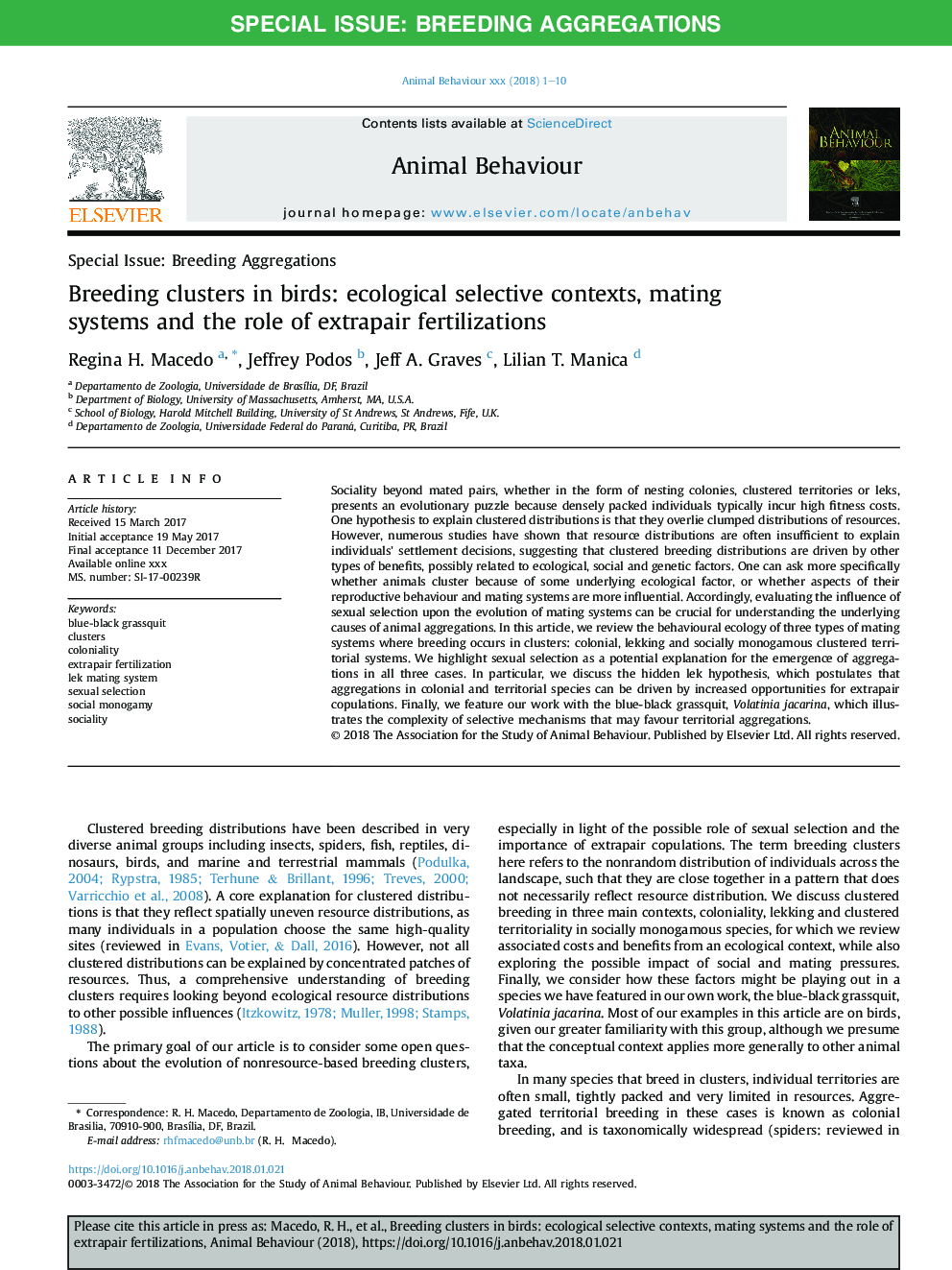| Article ID | Journal | Published Year | Pages | File Type |
|---|---|---|---|---|
| 9954588 | Animal Behaviour | 2018 | 10 Pages |
Abstract
Sociality beyond mated pairs, whether in the form of nesting colonies, clustered territories or leks, presents an evolutionary puzzle because densely packed individuals typically incur high fitness costs. One hypothesis to explain clustered distributions is that they overlie clumped distributions of resources. However, numerous studies have shown that resource distributions are often insufficient to explain individuals' settlement decisions, suggesting that clustered breeding distributions are driven by other types of benefits, possibly related to ecological, social and genetic factors. One can ask more specifically whether animals cluster because of some underlying ecological factor, or whether aspects of their reproductive behaviour and mating systems are more influential. Accordingly, evaluating the influence of sexual selection upon the evolution of mating systems can be crucial for understanding the underlying causes of animal aggregations. In this article, we review the behavioural ecology of three types of mating systems where breeding occurs in clusters: colonial, lekking and socially monogamous clustered territorial systems. We highlight sexual selection as a potential explanation for the emergence of aggregations in all three cases. In particular, we discuss the hidden lek hypothesis, which postulates that aggregations in colonial and territorial species can be driven by increased opportunities for extrapair copulations. Finally, we feature our work with the blue-black grassquit, Volatinia jacarina, which illustrates the complexity of selective mechanisms that may favour territorial aggregations.
Related Topics
Life Sciences
Agricultural and Biological Sciences
Animal Science and Zoology
Authors
Regina H. Macedo, Jeffrey Podos, Jeff A. Graves, Lilian T. Manica,
